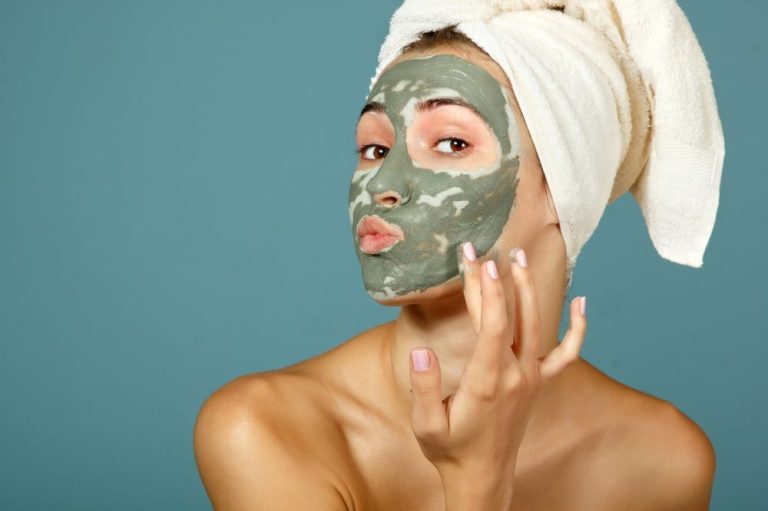What Can I Use For A Wedging Table?
A wedging table is a specialty table used by artists and designers for mixing colors and preparing materials. The table allows you to “wedge” your paint brush against the sloped edge to remove excess paint before blending new colors. Wedging tables usually have a flat surface and an angled edge. They are an essential tool for painters, photographers, designers, makeup artists, and more.
The main purpose of a wedging table is for mixing paints, inks, dyes, makeup, and other color materials. The angled edge provides a place to remove excess material from your brush or tools between colors. This helps keep the colors pure and prevents contamination. Wedging tables are designed to be easy to clean to avoid color cross-contamination.
Wedging tables can be made from various materials like wood, metal, stone, glass, and more. Each material has its own advantages and drawbacks when used for a wedging table. The most popular options will be explored in this article.
Wood
Wood is a popular material for furniture and other household objects like cutting boards. There are two main categories of wood: hardwood and softwood.
Hardwood comes from deciduous trees like oak, maple, cherry, and walnut. It’s generally stronger and more durable than softwood. Common hardwood types used for wedging tables include oak, maple, walnut, mahogany, and teak.
Softwood comes from coniferous trees like pine, cedar, and fir. It’s generally less expensive and easier to work with than hardwood. Common softwood types used for wedging tables include pine, cedar, and redwood.
Pros of using wood for a wedging table:
- Beautiful natural material with unique grains and textures
- Can be sanded and refinished
- Provides a warm, inviting aesthetic
- Good durability depending on type of wood
Cons of using wood for a wedging table:
- Can be prone to scratches, stains, and water damage
- Requires more maintenance than metal or stone
- Can warp or crack over time
- More expensive than some synthetic materials
Metal
Metal is a popular choice for wedging tables due to its durability and aesthetics. Stainless steel and aluminum are two of the most common types of metal used.
Stainless steel has a sleek, modern look and is highly resistant to stains, rust, and corrosion. It’s very durable and easy to clean. However, stainless steel can dent or scratch if abused and is typically more expensive than other materials.
Aluminum has a lightweight yet strong build. It resists rust and is long-lasting. Aluminum comes in various finishes and is relatively affordable. The downside is aluminum can dent easily compared to steel and may not have as clean of a look over time.
In general, metal wedging tables offer:
– Sleek, modern aesthetic
– High durability and scratch/stain resistance
– Easy to clean and maintain
– Potential for dents and scratches over time
– Higher cost than some materials like wood
Stone
Stone such as granite, marble, and slate can also be used to create wedging tables. Some pros of using stone are that it is extremely durable, heat resistant, and stain resistant. Stone also has a luxurious, high-end aesthetic. However, some downsides are that stone is very heavy, making the tables difficult to move. It is also one of the more expensive options for table tops. Stone requires sealing to prevent stains and etching from acidic liquids. So stone provides an elegant look, but requires more maintenance than some other materials.
Using Concrete for Wedging Tables
Concrete is a versatile material that can be molded into any shape, making it a potential option for wedging tables. Here are some of the pros and cons of using concrete:
Pros:
- Very durable – Concrete has high compressive strength and can withstand heavy weights and impacts.
- Can be textured and colored – Concrete can be stamped, stained, or painted to achieve different decorative looks.
- Doesn’t require finishing – The concrete surface doesn’t need extra finishing like wood does.
- Fireproof and waterproof – Concrete won’t rot or burn.
Cons:
Concrete wedging tables are ideal for permanent outdoor installations where heavy use is expected. The weight and cracking tendency make concrete less suitable for indoor, lightweight tables. With proper reinforcement and drainage, concrete wedging tables can be very long-lasting in the right setting.
Glass
Glass can be an attractive and functional material for wedging tables, but there are some important safety considerations. Glass is very hard and brittle, so it can easily shatter if dropped or knocked against a hard surface. This makes glass potentially dangerous in high traffic areas where the wedging table could get bumped into frequently.
The pros of glass include its sleek, modern aesthetic appeal and the ability to create tables with glass tops and creative glass bases. Glass is also very easy to clean. The smooth surface doesn’t absorb stains and can just be wiped down. Glass comes in various colors and levels of transparency, so you can find an option that fits your style.
The cons are that glass can easily shatter, as mentioned above. It can also show fingerprints, dust, and water spots readily. Glass tends to be heavier than some other materials as well, so glass tables are often more difficult to move and rearrange. And glass provides less friction than wood or stone, so items are more prone to sliding off of glass tabletops.
Tile
Tile can be a great material for a wedging table. Ceramic and porcelain tiles are two popular options that are durable, easy to clean, and come in a wide variety of styles and colors. There are a few considerations when using tile:
- Ceramic tile is typically cheaper than porcelain but more prone to chipping.
- Porcelain tile is harder and more stain resistant.
- The grout between the tiles needs to be sealed properly to avoid staining.
- Grout lines act as ridges so very small mosaic tiles work best for a smooth wedging surface.
- Make sure to use a grout that matches the color of the tile so stains are less visible.
With the right tile and grout, you can create a wedging table that is easy to clean and maintain for years of use. Just be aware that dropped tools can chip the surface and re-grouting may be needed over time.
Composite Materials
Composite materials like Corian, Quartz, recycled materials like crushed glass, paper, and wood, and natural materials like seashells are popular options for wedging table tops. Composite materials blend natural materials and resins to create a durable surface.
Some pros of composite table tops:
- Extremely durable and scratch resistant
- Can be molded into almost any shape
- Wide range of colors and patterns available
- Naturally antibacterial
- Heat and stain resistant
- Eco-friendly options like recycled glass and paper
Some potential cons:
- More expensive than some natural stone options
- Can be damaged by extreme heat
- Seams may be visible on some materials
Composite materials provide a great combination of durability, customization options, and eco-friendly choices for wedging tables. With proper care they can last for many years.
Comparing Materials
When selecting a material for a wedging table, there are a few key factors to consider – cost, durability, aesthetics, and functionality. Here’s a quick comparison of some of the most common materials:
Wood – Very affordable and easy to work with. Comes in a wide variety of styles and finishes. Prone to scratches and water damage. Mid-range durability.
Metal – Durable and sturdy but also quite expensive. Usually has an industrial look. Won’t warp or crack over time. Can be slippery.
Stone – Highly durable and comes in many natural patterns/colors, but very heavy and expensive. Needs sealing to prevent stains. Adds a sophisticated, high-end look.
Concrete – Inexpensive and can be molded into any shape. Prone to cracking and needs regular sealing. Has a modern, industrial vibe.
Glass – Provides a sleek, modern look. Transparent styles show off contents. Very expensive and fragile. Scratches easily.
Tile – Durable and comes in endless styles. Grout needs regular cleaning. Gives a fun, creative look with mosaics. Adds weight.
Composite – Affordable but very durable. Easy to clean. Won’t warp or crack. Many color options. Not as “high-end” as natural stone.
Overall, wood, metal, and tile tend to be the most commonly used materials for wedging tables. It often comes down to weighing factors like budget, functionality, and personal style preferences.
Conclusion
Buying or building a wedging table is an important decision when setting up a workshop. The right material choice will ensure your wedging table provides a sturdy, level surface for years of working with clay. This article has outlined some of the most common materials used to construct wedging tables, along with their key advantages and disadvantages.
The best materials for a wedging table are wood, metal, stone, or a composite. Wood is affordable and easy to work with, but requires sealing and eventual replacement. Metal is extremely durable, though more expensive. Natural stone offers a perfectly flat, stable surface, but is heavy and costly. Composite materials combine strengths of multiple materials for a practical option.
Avoid glass, tile, or concrete for your wedging table. Glass can easily break, tile may crack or warp, and concrete is prone to staining and abrasion. Instead, opt for a natural material like wood or stone, or an engineered composite for the ideal wedging table surface.
Consider your budget, workshop size, and design aesthetics when selecting a wedging table material. Proper construction and sealing/finishing will also impact durability. With the right choice, your wedging table can serve potters for generations to come.


